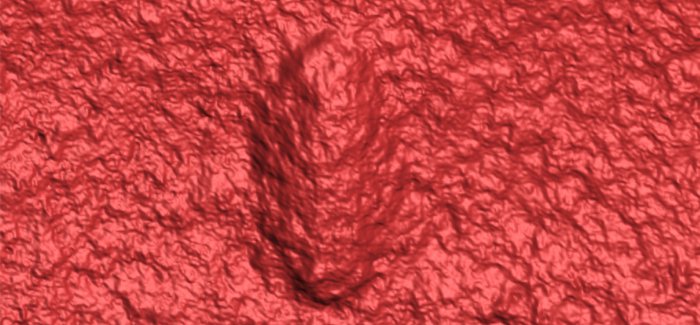
April 7, 2020
Research Highlight
Earth's Oldest Bilaterian
Scientists report discovery of the oldest known fossil evidence of a bilaterian animal

3D laser scan of a fossil of Ikaria wariootia, one of the oldest known bilaterians found in Earth's geological record. This fossil was discovered in the Ediacara member of South Australia.Image credit: Evans et al. (2020)/UC Riverside.
Astrobiologists supported in part by the NASA Astrobiology Program have provided new insight into the transition between simple, microscopic life and complex animal life. Based on geological evidence, this transition reached a critical point with the Ediacara Biota (571 to 539 million years ago). An important step in this process was the appearance of bilateral animals, which have two openings connected by a through gut.
The recent study describes a fossil of a bilaterian animal dubbed Ikaria wariootia. The fossil was recovered from the Ediacara member in South Australia and is one of the oldest bilaterians yet identified. Studies of I. wariootia support ideas that the last ancestor of all bilaterian life on Earth was simple and small. Importantly, I. wariootia appears to be a link between the Ediacaran record and subsequent animal life that evolved following this interval of Earth’s history.
The study, “Discovery of the oldest bilaterian from the Ediacaran of South Australia,” was published in the Proceedings of the National Academy of Sciences (PNAS). The work was supported by NASA Astrobiology through the Exobiology Program and the NASA Astrobiology Institute. This newly-revealed science is also a critical part of NASA’s work to understand the Universe, advance human exploration, and inspire the next generation. As NASA’s Artemis program moves forward with human exploration of the Moon, the search for life on other worlds remains a top priority for the agency.